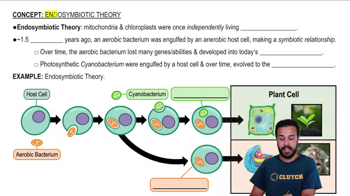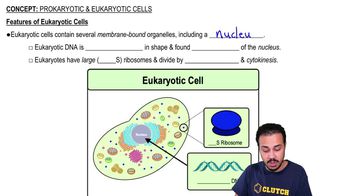Multiple Choice
Which of the following statements about chloroplasts and mitochondria is true?
2452
views
3
rank
 Verified step by step guidance
Verified step by step guidance Verified video answer for a similar problem:
Verified video answer for a similar problem:


 7:29m
7:29mMaster Endosymbiotic Theory with a bite sized video explanation from Bruce Bryan
Start learning